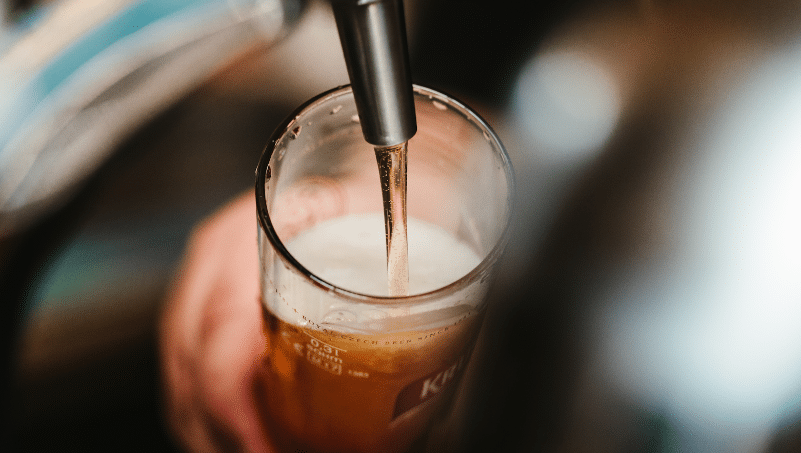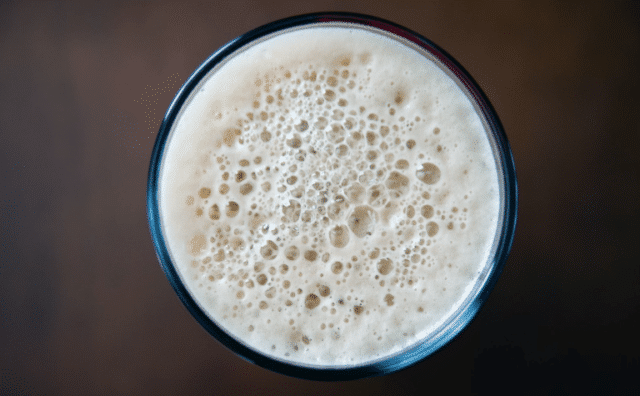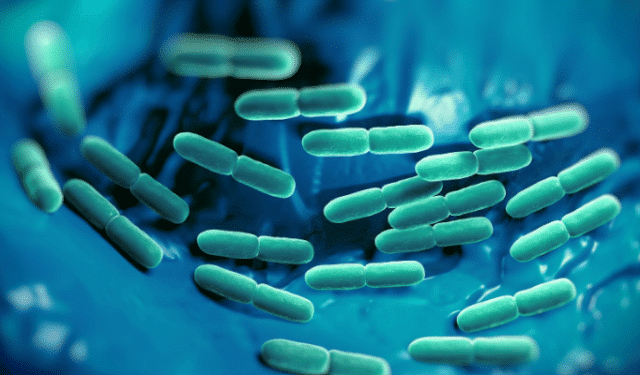Microbes, often unseen to the naked eye, play a crucial role in the process of brewing beer. Their importance lies in the fermentation process, where yeast, a type of microbe, converts sugars into alcohol to produce beer. But, microbes’ role in beer production is not just confined to yeast.
In fact, microbes can even spoil beer if the brewing process and line system isn’t up to scratch.
That’s why our microbiome experts have put together this expert guide to microbes in beer, covering everything you need to know about the microbial bacteria that makes your favourite pint possible, the not-so-friendly bacteria that can ruin it, and how to maintain a healthy balance for the best tasting beer.
The role of yeast in brewing
Yeast, the most crucial microbe in brewing, is responsible for the alcoholic fermentation process.
This single-celled organism consumes sugars present in the wort, the liquid extracted from the mashing process involving the mixing of grains with water, and produces alcohol, carbon dioxide, and flavors.
Brewers often classify yeast into two main types: top-fermenting and bottom-fermenting, used in ales and lagers respectively.
Lager yeast strains, also known as Saccharomyces pastorianus, are bottom-fermenting and work in colder temperatures, resulting in a clean and crisp taste. On the other hand, ale yeast strains (like Saccharomyces cerevisiae) ferment at warmer temperatures and produce more complex flavors.
The science behind fermentation
The fermentation process is more than just yeast consuming sugars. It involves a complex series of biochemical reactions. The yeast cell first breaks down the sugar molecule, usually maltose, into simpler glucose molecules.
The glucose is then converted into energy, alcohol, carbon dioxide, and other by-products through a process called glycolysis. The science behind this process involves enzymes, which are special proteins that act as catalysts to speed up chemical reactions.
Enzymes play a critical role in the fermentation process, and their presence and activity can greatly impact the final taste, aroma, and character of beer.
Bacteria in beer 101
While yeast plays the leading role, there are other microbes involved in the brewing process. For example, certain bacteria like Lactobacillus and Pediococcus are used in the brewing of sour beers. They produce lactic acid bacteria, which gives the beer its characteristic tart flavor.
Overall, bacteria in beer can have both positive and negative effects. On one hand, they can contribute to flavor and aroma, but on the other hand, they can also spoil beer if not kept in check.
Beer microbes and flavor
Microbes are the unsung heroes behind the diverse range of flavors and aromas in beers. The by-products of fermentation, such as esters, phenols, and other compounds, contribute to the beer’s flavor profile. Brewers can manipulate these flavors by altering fermentation conditions.
For example, the presence of specific yeast strains can produce fruity or spicy notes, while certain bacteria can create sour or funky flavors.
The dark side of microbes in beer
Just as certain microbes are essential for brewing, others can have disastrous effects on beer. These ‘beer spoilers’ or beer spoilage organisms can cause off flavors, haziness, and other unwanted characteristics. Modern breweries use strict hygiene practices to prevent contamination.
Beer spoilage bacteria also have a significant impact on beer shelf life. Their presence can cause spoilage and result in off flavors even after the beer has been bottled.
Beer spoilage bacteria often includes:
- Gram negative bacteria of the genus Zymomonas that can spoil primed cask conditioned beer and cider.
- Gram positive bacteria like Lactobacillus, which produces lactic acid, causing sourness and astringency in beer in too high amounts.
- Acetic acid bacteria (such as Acetobacter or Gluconacetobacter) is the main volatile fatty acid in alcoholic beverages, but can result in a vinegar-like flavor if not moderated.
- Lactic acid bacteria such as Pediococcus which can create a sour taste in beer when unmoderated.
- Wild yeasts, like Brettanomyces, can lead to off-flavors, including a “barnyard” or “horse blanket” aroma. While some brewers intentionally use wild yeast for certain styles of beer, it can also contaminate other batches if proper sanitation practices are not followed.
Lactobacillus Bacteria – Image Source
Microbial beer spoilage incidents
In the past, contamination by microbes has led to major beer recalls and lost revenue for breweries. For example, in 2015, a major Australian brewery recalled thousands of bottles of its pale ale due to potential contamination by Brettanomyces yeast.
Similarly, in 2014, the 10 Barell Brewing Co. recalled bottles of their sour beer named ‘Swill’. The recall was prompted by reports of beer gushing out of the bottles and one report of a glass bottle breaking as a result of contamination with Saccharomyces cerevisiae var. diastaticus.
These incidents highlight the importance of maintaining strict hygiene practices and quality control measures in breweries to prevent microbial contamination.
Microbes in Beer Quality Report 2017
You may or may not be a beer drinker or know much about the brewing industry as a whole – but regardless of where you fall on the spectrum of familiarity, you’ll likely be surprised by the role bacteria were found to play in hurting the quality of beer in the United Kingdom, as reported in the Beer Quality Report 2017.
Published by Cask Marque, a beer quality watchdog in the UK, the Beer Quality Report shares the results of research done in 22,000 pubs across the United Kingdom. Perhaps of note to the microbiology community is the report’s section on line cleaning.
As mundane as line cleaning sounds, the report projects that the economic value lost for a typical pub due to bacteria and yeast-laden draught beer lines is around $40,000 – no small sum for your average pub. What may be more disturbing to most beer drinkers is the finding that one in three pints served in the UK is drawn through unclean beer lines.
That means that a third of the lines were found to have yeast and bacterial buildup to the extent that it hurt beer quality. Besides being unnerving, it’s worth noting that bacteria tend to spoil the aroma and flavor of beer, which ruins the experience for consumers, and is just bad for business.
Another interesting finding from the report is the breakdown of unclean beer lines by type of beer. For instance, cider lines were found to be the dirtiest in the UK on average, with 44 percent of inspected lines determined to be unclean.
When beer type was combined with location, it was found that 53 percent of cider lines in Wales were determined to be unclean. The next most likely beer type to be drawn through dirty lines were stout beers, as the report found that 36 percent of stout lines were found to be unclean. Premium and standard lagers were the next most likely lines to be unclean, with 35 percent and 36 percent of those lines found to be dirty, respectively.
Fortunately, beer is generally considered inhospitable to the majority of the microorganisms, as the low pH and ethanol concentration effectively limit bacterial growth. As a result, there are only a few known bacterial strains that are able to grow under these conditions.
The future of microbes in brewing
As we look towards the future, advancements in microbiology and genetic engineering may open new doors in brewing.
The ability to genetically modify yeast and other microbes could provide brewers with unprecedented control over the fermentation process, potentially creating new beer styles and flavors.
In conclusion, microbes play a vital role in brewing, shaping the taste and aroma of the beer we drink. Whether it’s the yeast turning sugars into alcohol or the bacteria adding a tart kick to a sour, these tiny organisms significantly impact the final product.
Understanding their role can not only improve the brewing process but also enhance our appreciation for this popular beverage.
Closing thoughts
As the Beer Quality Report 2017 shows, microbes even play a significant role in economic success and consumer satisfaction when it comes to beer brewing. Not bad for being microscopic.
All in all, the world of beer and microbiology are closely intertwined, with each influencing the other in unique ways. So next time you raise a glass of your favorite brew, take a moment to appreciate all the tiny microbes that made it possible. Cheers!
Unlock the Power of the Microbiome with CosmosID
If you’re interested in learning more about the role of microbes in brewing and other industries, check out the CosmosID-HUB. With cutting-edge technology that allows for rapid and accurate identification of microorganisms, the Hub can provide valuable insights for various applications.
Whether you’re interested in microbiome sequencing services or bioinformatics, our state-of-the-art pipeline and database give you unparalleled access to the world of microbes.
Get in touch today to learn more.
Microbes in Beer FAQs
What microbe is in beer?
The main microbe found in beer is yeast, which is responsible for the fermentation process that converts sugars into alcohol. However, there are also other microbes such as bacteria and fungi present in varying amounts depending on the type and brewing process of the beer.
What microbes are in alcoholic beverages?
Apart from beer, other alcoholic beverages such as wine and spirits also contain microbes. Wine is primarily fermented by yeast, while spirits are usually distilled to remove any remaining microbes. However, some spirits like whiskey may still contain traces of bacteria that contribute to their distinct flavors.
Are there living organisms in beer?
Yes, there are living organisms in beer. Yeast is the most common living organism found in beer, responsible for fermentation and converting sugars into alcohol. Additionally, small amounts of bacteria and fungi may also be present in varying quantities depending on the type of beer and brewing process. These microbes play a significant role in shaping the taste and aroma of the final product.
What are undesirable microbes in beer production?
Undesirable microbes in beer production refer to those that can negatively impact the quality and taste of the final product. This includes bacteria that produce off-flavors, spoilage organisms that cause contamination, or wild yeast strains that can alter the intended fermentation process. Proper cleaning and sanitation practices are crucial in preventing the growth of these undesirable microbes.




